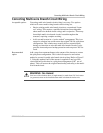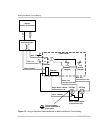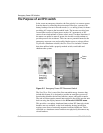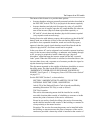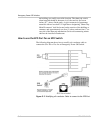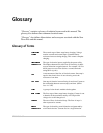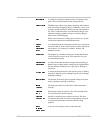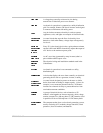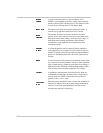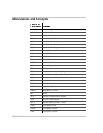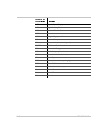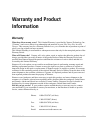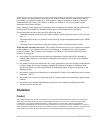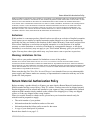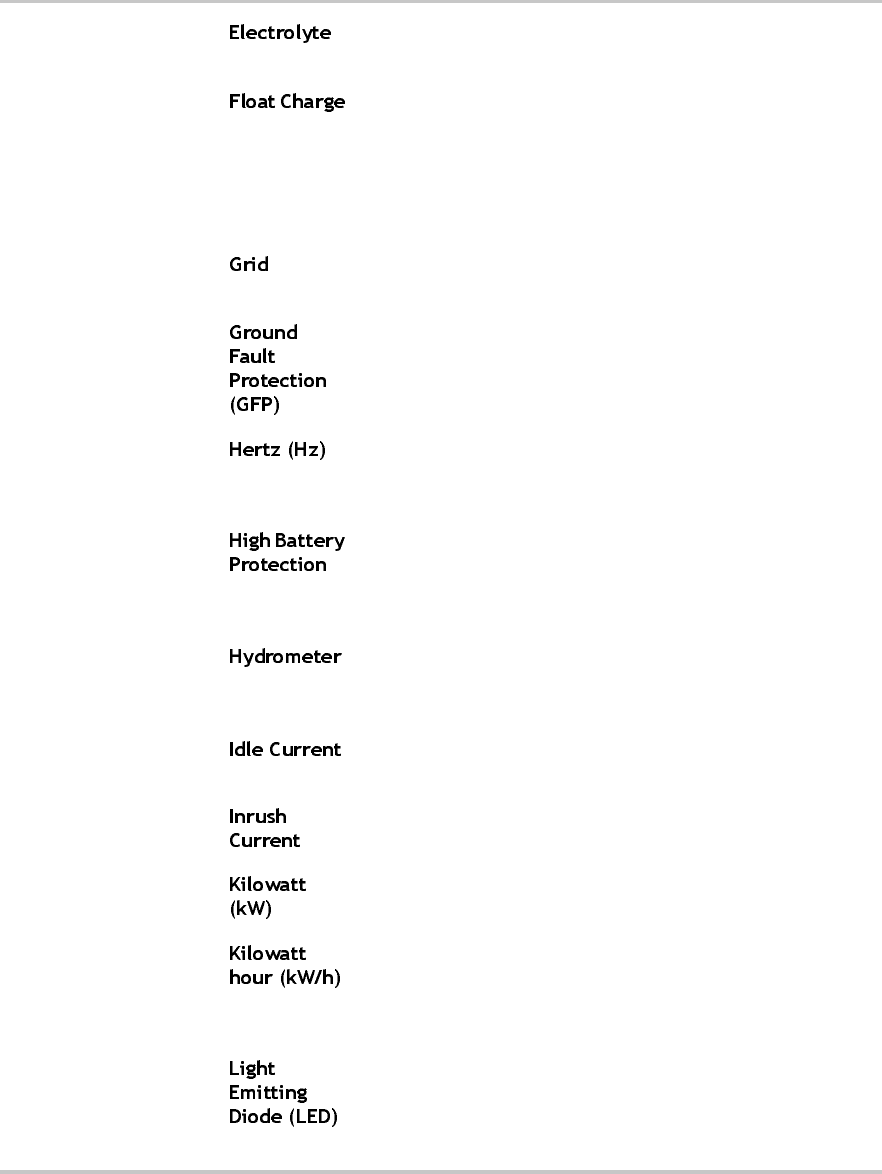
H–2 976-0043-01-02
A conductive medium in which the flow of electricity takes
place; this is the liquid found inside storage batteries.
The third stage of three-stage battery charging. After batteries
reach full charge, charging voltage is reduced to a lower level
to reduce gassing (boiling of electrolyte) and prolong battery
life. This is often referred to as a maintenance charge, since
rather than charging a battery it keeps an already-charged
battery from self-discharging.
When used in reference to utility power, it refers to a system
of electrical transmission and distribution lines.
A circuit protection device that prevents the flow of electrical
current to earth if a short circuit is present. Usually required in
wet locations—for example, for outdoor, kitchen, and
bathroom circuits.
The frequency, or number of times per second, that the flow
of AC electricity reverses itself. Also referred to as cycles
(see alternating current).
A control circuit that disconnects charge current flowing to
batteries when voltage reaches a dangerously high threshold.
Prevents damage created by excess gassing (or boiling) of
electrolyte.
A simple device that measures the specific gravity of battery
electrolyte. Specific gravity readings express state of charge/
discharge of battery.
The amount of electrical power required to keep an inverter
ready to produce electricity on demand.
The peak power that a load will draw at the instant that it
starts up.
One thousand watts of electricity. Ten 100-watt light bulbs
use one Kilowatt of electrical power.
One kW of electrical power used for one hour. The most
common measurement of electrical consumption, most grid
connected electrical meters measure kWh for billing
purposes.
A device used to display various status functions.




